Today Current Affairs: 27th August 2022 for UPSC IAS exams, State PSC exams, SSC CGL, State SSC, RRB, Railways, Banking Exam & IBPS, etc
Table of Contents
Smart India Hackathon:
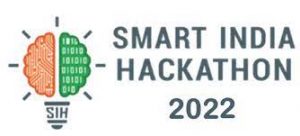
The Prime Minister of India addressed the Grand Finale of Smart India Hackathon 2022 via video conferencing.
- Smart India Hackathon (SIH) was started in the year 2017.
- Smart India Hackathon is a nationwide initiative to provide students with a platform to solve some of the pressing problems we face in our daily lives, and thus inculcate a culture of product innovation and a mindset of problem-solving.
- SIH has been conducted every year since 2017 in two formats, SIH Software and SIH Hardware Editions for higher education students.
- The first four editions SIH2017, SIH2018, SIH2019 and SIH2020 proved to be extremely successful in promoting innovation out-of-the-box thinking in young minds, especially engineering students from across India.
- Smart India Hackathon is an initiative by the Ministry of Education, All India Council for Technical Education (AICTE), Persistent Systems and Inter Institutional Inclusive Innovation Centre (i4C).
- Aim:It aims to inculcate the culture of product innovation, problem-solving and out-of-the-box thinking among students.
Artemis I Mission:
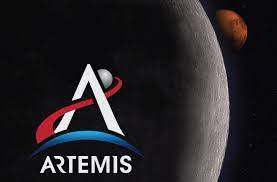
National Aeronautics and Space Administration (NASA) is about to launch its Artemis Program.
- Artemis I is an uncrewed mission of NASA.
- It will test the agency’s Space Launch System (SLS) rocket and Orion crew capsule.
- Artemis I will be the first in a series of increasingly complex missions to build a long-term human presence at the Moon for decades to come.
- The primary goals for Artemis I are to demonstrate Orion’s systems in a spaceflight environment and ensure a safe re-entry, descent, splashdown, and recovery prior to the first flight with crew on Artemis II.
- Artemis I launch :The SLS rocket and Orion spacecraft have completed their journey from their assembly building to Launch Complex 39B at the Kennedy Space Centre in Florida.
- At launch, the rocket will produce a maximum of more than 3.9 million kilograms of thrust from its four RS-25 engines and five-segment boosters.
- Shortly after launch, the boosters, service module and launch abort systems will be offloaded.
- Then, the core stage engines will be shut down and the core stage will separate from the spacecraft.
Pen Plus Strategy:
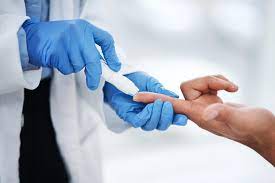
Africa has adopted a new strategy called PEN-PLUS Strategy to boost access to the diagnosis, treatment and care of severe Non-Communicable Diseases (NCD).
- It’s a regional strategy to address severe Non-Communicable Diseases at First-Level Referral Health Facilities.
- The strategy is aimed at bridging the access gap in treatment and care of patients with chronic and severe NCDs.
- It urges countries to put in place standardised programmes to tackle chronic and serious non-communicable diseases by ensuring that essential medicines, technologies and diagnostics are available and accessible in district hospitals
- In India, nearly 5.8 million people (WHO report, 2015) die from NCDs (heart and lung diseases, stroke, cancer and diabetes) every year or in other words 1 in 4 Indians has a risk of dying from an NCD before they reach the age of 70.
- Further, it is found that there is an increase in the contribution of NCDs from 30% of the total disease burden- ‘disability-adjusted life years’ (DALYs) in 1990 to 55% in 2016 and also an increase in proportion of deaths due to NCDs (among all deaths) from 37% in 1990 to 61% in 2016.
- The four major NCDs are cardiovascular diseases (CVDs), cancers, chronic respiratory diseases (CRDs) and diabetes.
- Causes: Physical inactivity, unhealthy diets (diets low in fruit, vegetables, and whole grains, but high in salt and fat), tobacco use (smoking, secondhand smoke, and smokeless tobacco), and the harmful use of alcohol are the main behavioural risk factors for NCDs.
Benami Transactions Act:

The Supreme Court of India held that Section 3(2) of the Benami Transactions (Prohibition) Act 1988 as unconstitutional on the grounds of being manifestly arbitrary.
- Section 3(2) prescribes the punishment for entering into benami transaction.
- The judges held that the Act which was amended in 2016 can only be applied prospectively and quashed all prosecutions or confiscation proceedings before the amended Act came into force.
- Section 3(3) of 2016 Act:
- It extended the three-year imprisonment to seven years and fine of up to 25% of the fair market value of the property, if a person enters into any benami transactions.
- The Supreme Court ruled that “Concerned authorities cannot initiate or continue criminal prosecution or confiscation proceedings for transactions entered into prior to the coming into force of the 2016 Act (25th October 2016).
- As a consequence of the above declaration, all such prosecutions or confiscation proceedings shall stand quashed”.
- Forfeiture of Benami Properties:
- The Supreme Court also held the provision in the 1988 Act regarding forfeiture of benami properties as unconstitutional, and added that the provision in the 2016 amended Act on the same can only be applied prospectively.
- As it is not concerned with the constitutionality of independent forfeiture proceedings contemplated under the 2016 Amendment Act on the other grounds, it was leaving open the question to be decided in appropriate cases.
Prevention of Money Laundering Act (PMLA), 2002:
- A recent judgement of the Supreme Court upheld the provision of PMLA which allows authorities to take possession of property before trial in exceptional cases.
- The Supreme Court has said that such provision leaves the scope for arbitrary application.
Yudh Abhyas Joint Exercise:
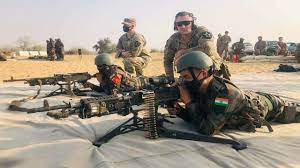
The upcoming fifteenth edition of the “Yudh Abhyas” joint exercise is expected to take place next month in a high-altitude area in Uttarakhand less than 100 km from the LAC.
- As per agreements signed by China and India in 1993 and 1996, neither side is allowed to conduct military exercises against the other in areas near the Line of Actual Control.
- India-US exercises are “completely different” from the situation at the LAC, and denied that they were “targeting” China or were violative of previous agreements.
Yudh Abhyas’s joint exercise:
- It is one of the longest-running joint military training and defence cooperation ( started in 2004 under the US Army Pacific Partnership Program) between India and the US.
- The exercise is hosted alternately between both countries.
Automatic Number Plate Reader(ANPR) Cameras:
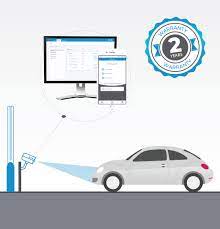
The Ministry of Road Transport and Highways will install is planning to remove all the toll plazas on the national highways and rely on Automatic Number Plate Reader(ANPR) cameras.
- ANPR cameras will read the vehicle number plates and automatically deduct toll fees from the bank accounts of the vehicle owners.
- Only those that have come after 2019 will be registered by the cameras. The government plans to come up with a scheme to replace older number plates.
- Other issues are when things are written on number plates, beyond the nine-digit registration number, such as ‘govt of India/Delhi’ and names of Gods etc
- Currently, about 97% of the total toll collection happens through FASTags the remaining 3% pay higher than normal toll rates for not using FASTags.
What Is SaaS?

The study by CII and EY, titled India: The next global SaaS capital cited India is home to about 100-plus unicorns and is rapidly emerging as a hub for SaaS start-ups.
SaaS:
- Software as a service (or SaaS) is a way of delivering applications over the Internet—as service ( freeing up the need of installing and maintaining software).
- It is also called Web-based Software.
- India now has 18 SaaS unicorns with the country being the third largest SaaS ecosystem globally, after the USA and China.
- By 2025, the Indian SaaS market will become 7 to 10% of the global SaaS market (from the current 2-4% presently)
Government Notifies Battery Waste Management Rules, 2022:

The Ministry of Environment, Forest and Climate Change published the Battery Waste Management Rules, 2022 to ensure environmentally sound management of waste batteries and replace the Batteries (Management and Handling) Rules, 2001.
Batteries covered under the new rules:
- Electric Vehicle batteries
- Portable batteries
- Automotive batteries
- Industrial batteries
Battery Waste Management Rules, 2022:
- Extended Producer Responsibility (EPR): Producers (including importers) of batteries are responsible for the collection and recycling/refurbishment of waste batteries and the use of recovered materials from waste into new batteries.
- Mechanism of centralized online portal: For the exchange of EPR certificates between producers and recyclers/refurbishers to fulfil the obligations of producers.
- Industries and entrepreneurship: Setting up of new industries and entrepreneurship in collection and recycling/refurbishment of waste batteries.
- Mandatory minimum percentage of recovery of materials from waste batteries: It will bring new technologies and investment in the recycling and refurbishment industry and create new business opportunities.
- Use of a certain amount of recycled materials for new batteries: It will reduce the dependency on new raw materials and save natural resources
- Online registration & reporting, auditing, and a committee: To monitor and implement rules and to take measures required for removal of difficulties.
- Polluter Pays Principle: Environmental compensation will be imposed for non-fulfilment of Extended Producer Responsibility targets, responsibilities and obligations set out in the rules.
- Utilization of funds: The funds collected under environmental compensation shall be utilized in collection and refurbishing or recycling of uncollected and non-recycled waste batteries.
38th Meeting Of The Joint River Commission (JRC):
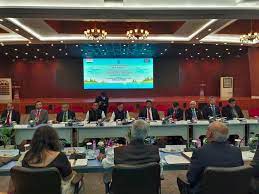
India and Bangladesh discussed a wide range of issues related to the major common rivers such as the Ganga, Teesta and several smaller rivers during the 38th meeting of the Joint River Commission (JRC).
Key Highlights:
- JRC finalized the text of the MoU on Interim Water Sharing of Kushiyara river.
- Finalization of the design and location of water intake point on Feni river to meet drinking water needs of Sabroom town in Tripura.
- The two sides also discussed:
- Exchange of flood-related data and information
- River-bank protection works
- Common basin management
- The River Interlinking Project of India.
- Ganges water sharing treaty: Both sides agreed to conduct the feasibility study for optimum utilization of water received by Bangladesh under the provision of the Ganges Water Sharing Treaty, 1996.
One Nation One Fertiliser:
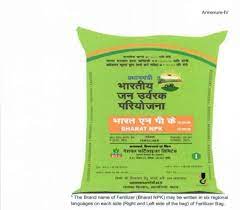
To bring about uniformity in fertiliser brands across the country, the government issued an order directing all companies to sell their products under a single brand name of ‘Bharat’.
- All fertiliser bags, whether containing urea or di-ammonium phosphate (DAP) or muriate of potash (MOP) or NPK will sport the brand name ‘Bharat Urea’, ‘Bharat DAP’, ‘Bharat MOP’ and ‘Bharat NPK’ irrespective of the company that manufacturers
- A single brand name and the logo of Pradhan Mantri Bhartiya Janurvarak Pariyojana (PMBJP) will have to be displayed on the bag.
- The central government grants subsidies annually to the fertiliser companies und PMBJP
- The maximum retail price of urea is currently fixed by the government, which compensates companies for the higher cost of manufacturing or imports incurred by them.
- Companies cannot avail subsidy if they sell at MRPs higher than indicated by the government.
- Through the Fertiliser (Movement) Control Order, 1973 the government also decides where they can sell.




